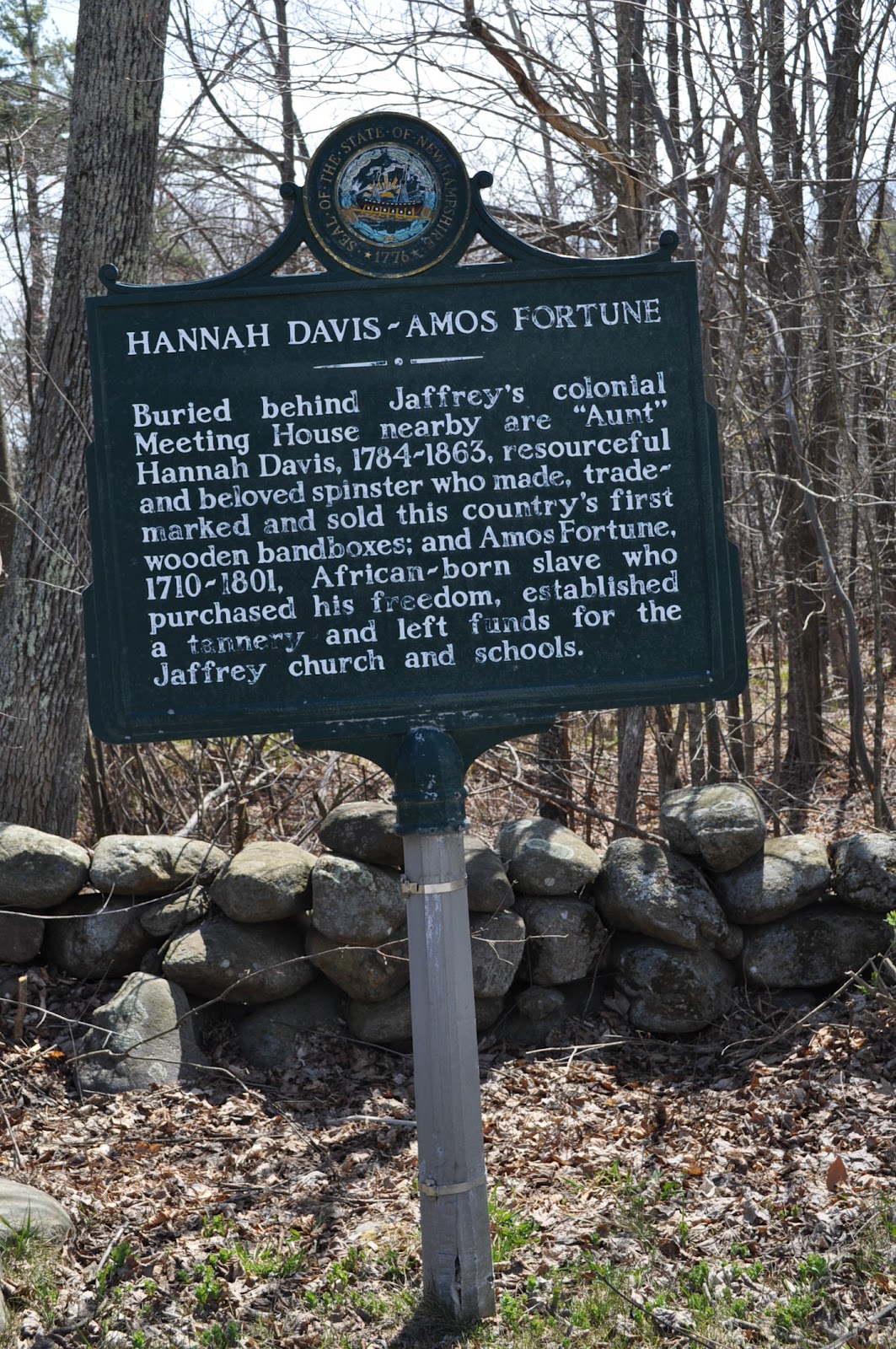Life of Amos Fortune
Who Was Amos Fortune?
Amos Fortune, an exemplary citizen of colonial New England, was born in the early 1700s in Africa and came to this country as a slave. A tanner by profession, Fortune bought his freedom and that of his two wives. At the age of 71, he left Massachusetts and moved to Jaffrey with his second wife to start a tanning business. Documents – ranging from business receipts to grave marker inscriptions — attest to his literacy, professional skills, community position, and financial success.
Unfortunately, nothing is known of Amos Fortune’s early life. The first historical record is an unsigned “freedom paper,” dated December 30, 1763, in which Ichabod Richardson, “tanner of Woburn, in the province of Massachusetts-bay in New England ‘agreed’ to and with my Negroe man, Amos, that at the end of four years next insuing this date the said Amos shall be Discharged, Freed, and Set at Liberty from my service power & Command for ever….” Richardson died unexpectedly in 1768, and his will contained no provisions for the slave’s promised freedom. Amos Fortune negotiated with the heirs to “pay off his bond” and made the last payment in 1770, becoming a free man at age 60.
During the next few years Amos Fortune lived and worked in Woburn, buying land and building a house. His first wife, Lydia Somerset – whom he had purchased for fifty pounds from Josiah Bowers of Billerica – died shortly after their marriage in 1778. On November 9, 1779, Fortune purchased the freedom of Violate from James Baldwin: “This Day Received of Amos Fortune Fifty pounds in full for a Negro woman named Vilot being now my property which I do Sell and Convay to the aforesaid Amos.” They were married the next day in Woburn.
The Fortunes Come to Jaffrey
In 1781 Amos Fortune came to Jaffrey to establish himself as a tanner. His first home and tannery were at the foot of the hill west of the Common on land set aside for the minister, a position that had not yet been filled. A year later Laban Ainsworth, who was to become Fortune’s good friend, was called to be Jaffrey’s first minister. Amos Fortune stayed on the Ainsworth property until 1789 when he purchased 25 acres on the Tyler Brook along the road to Sharon. The house and barn he built are still standing, and the road is now called Amos Fortune Road.
Little is known about those first years in Jaffrey, except that by 1785 the Fortunes had adopted a daughter, Celyndia. The tannery prospered; Fortune took on at least two apprentices and served clients in Massachusetts, as well as nearby New Hampshire towns. Amos Fortune was a full member of the First Church in Jaffrey, regularly attending the Sunday services led by Reverend Ainsworth. He also helped found the Jaffrey Social Library, whose members met Saturday evenings to collect and discuss books dealing with history and travel:
“Lived Reputably and Died Hopefully”
Amos Fortune signed a will drawn up by Roger Gilmore in October 1801, making provisions for Violate and Celyndia after his death. He died in November at the age of 91 and was buried behind the Jaffrey Meetinghouse in the Old Burying Ground. The inventory of his estate reflects a well-dressed and prosperous businessman who owned silver shoe buckles, a silver watch, and a fur coat. Fortune instructed his executor Eleazer Spofford, after other bequests were paid, to have “handsome gravestones” erected to his wife and himself and to make a “handsome present” to the church. Any remaining monies were given to the town to support Schoolhouse Number 8. This last bequest has evolved into the Amos Fortune Fund and has supported diverse projects including public speaking contests and special publications. The Jaffrey Public Library now administers the Fund, using the income to develop and distribute educational materials on Amos Fortune.
Violate Fortune died in 1802, one year after her husband, and was buried next to him. Their moving epitaphs were written by the Reverend Laban Ainsworth.
Sacred to the memory of Amos Fortune, who was born free in Africa, a slave in America, he purchased liberty, professed Christianity, lived reputably, and died hopefully, Nov. 17, 1801, AEt. 91
Sacred to the memory of Violate, by sale the slave of Amos Fortune, by marriage his wife, by her fidelity, his friend and solace, she died his widow Sept. 13, 1802, AEt. 73
For more information, see Amos Fortune, The Man and His Legacy, written by Peter Lambert, published by the Amos Fortune Forum in 2000, and distributed by the Jaffrey Public Library. Written with teachers in mind this book compares the historical record with fictional accounts of Fortune’s life, notably Elizabeth Yates’ well-known children’s book, Amos Fortune, Free Man available from the Toadstool Book Store. Another source is the American National Biography published in 1999 by the Oxford University Press.

